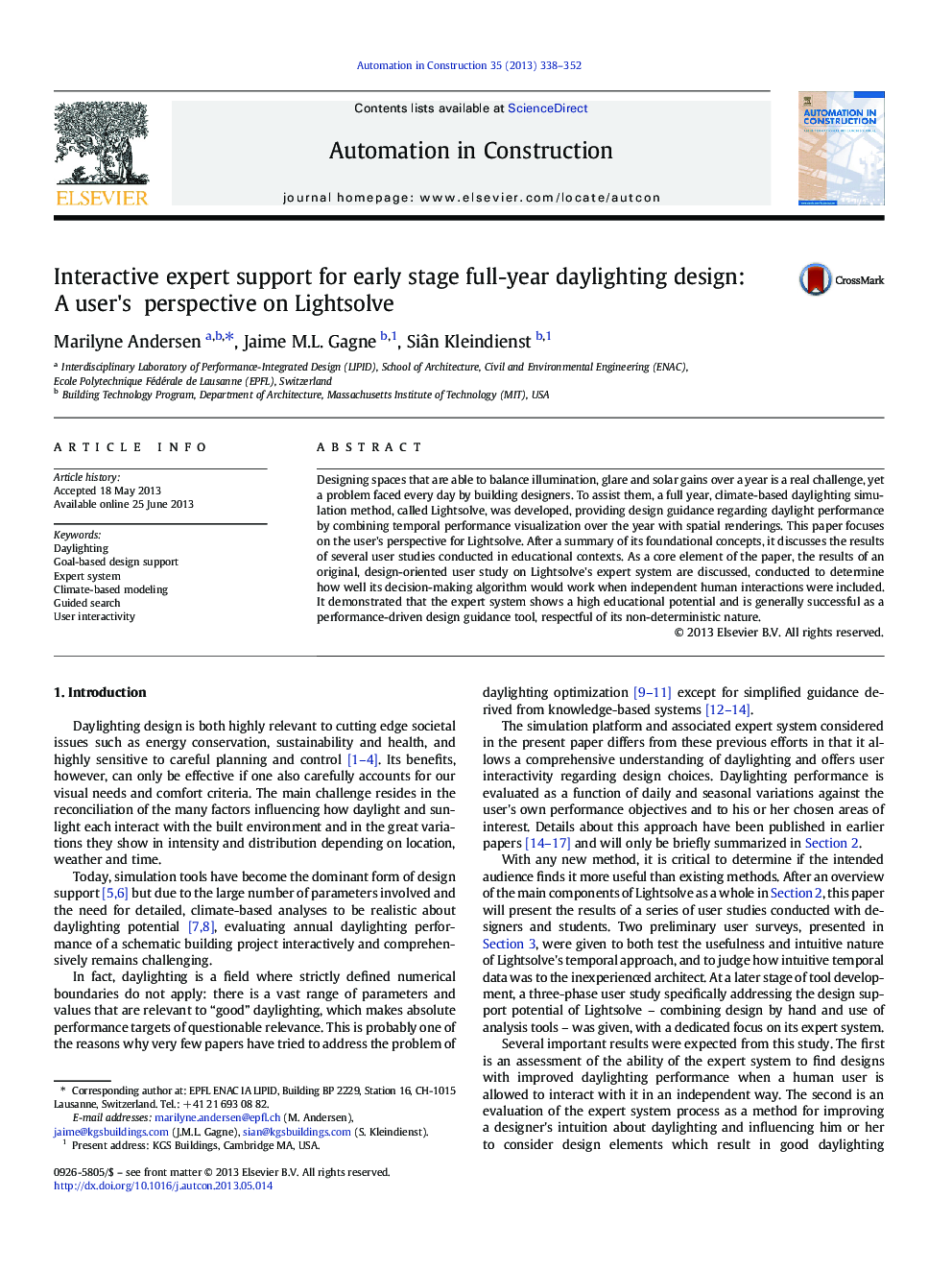| Article ID | Journal | Published Year | Pages | File Type |
|---|---|---|---|---|
| 246633 | Automation in Construction | 2013 | 15 Pages |
•Comprehensive, goal-based design support focused on daylight dynamics.•Original user study was designed to integrate ill-defined nature of design process.•User studies confirmed tool potential for interactivity in early stages of design.•Expert system shown successful in educating designers about daylighting performance.
Designing spaces that are able to balance illumination, glare and solar gains over a year is a real challenge, yet a problem faced every day by building designers. To assist them, a full year, climate-based daylighting simulation method, called Lightsolve, was developed, providing design guidance regarding daylight performance by combining temporal performance visualization over the year with spatial renderings. This paper focuses on the user's perspective for Lightsolve. After a summary of its foundational concepts, it discusses the results of several user studies conducted in educational contexts. As a core element of the paper, the results of an original, design-oriented user study on Lightsolve's expert system are discussed, conducted to determine how well its decision-making algorithm would work when independent human interactions were included. It demonstrated that the expert system shows a high educational potential and is generally successful as a performance-driven design guidance tool, respectful of its non-deterministic nature.
Graphical abstractFigure optionsDownload full-size imageDownload as PowerPoint slide
